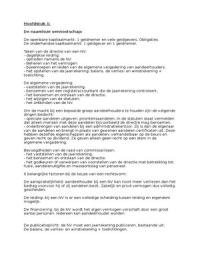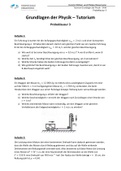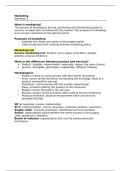Early Embryogenesis
Embryogenesis:
— formation of body structures & organs (organogenesis)
— requires cell division (proliferation) and cell differentiation (specialization)
— produces the great variety of cell types and extracellular products found in the body.
Cell specialization:
— selective gene expression (and resultant protein production) is the ultimate explanation for
the cell differentiation process during embryogenesis.
— genetic expression by a particular cell depends on the cell’s previous genetic history (com-
mitment lineage) and its current cellular environment (intercellular communications).
Cell Differentiation
stem cell committed cells specialized cell
pyramidal neuron
e.g., neuroblast
ectoderm neural epithelium stellate neuron, etc.
astrocyte
glioblast
oligodendrocyte
Cell differentiation is the result of cells expressing some genes and suppressing others
within a common genome. Cells differ because they produced different proteins/peptides.
Proteins & peptides are:
— structural components (cytoskeleton or extracellular structures)
— enzymes (controlling cell metabolism)
— secretory products (e.g., hormones; digestive enzymes; etc.)
— channels & pumps (passage of molecules across membranes)
— receptors (communication, etc.)
Periods:
Embryonic Period — defined as the time from fertilization to the earliest (primordial) stages
of organ development (about 30 days in dog, cat, sheep, pig; almost 60 days in horse, cattle, human).
Fetal Period — the time between the embryonic period and parturition (the end of gesta-
tion), during which organs grow and begin to function.
Fertilization:
— union of a haploid oocyte and a haploid spermatozoon, producing a diploid zygote
(a pleuripotent cell capable of developing into a new individual)
— fertilization begins with gamete fusion (zygote formation)
— fertilization ends with the initiation of zygote cell division (the start of cleavage)
Fertilization related details:
— fusion of a spermatozoon with an oocyte takes place in the uterine tube, near the ovary
— the spermatozoon must bind to a specific glycoprotein on the zona pellucida surrounding
the oocyte [this species recognition process prevents union with foreign sperm];
3
, — then the spermatozoon releases degradative enzymes (acrosomal reaction) [the enzymes
denature the zona pellucida, allowing the sperm cell to penetrate the barrier]
— spermatozoon and oocyte plasma membranes fuse (secondary oocyte completes meiosis)
— the oocyte immediately cancels its membrane potential (via Ca++ influx) and then
denatures its zona pellucida (via enzymes are released by exocytosis from oocyte
cytoplasmic granules) [this prevents fusion by additional sperm]
— male & female haploid pronuclei make contact, lose their nuclear membranes, and begin
mitosis (mitosis begins 12 hours after sperm fusion; DNA synthesis takes place before mitosis)
Oocyte (enveloped by a zona pellucida (glycoprotein membrane) and corona radiata (granulosa cells) at ovulation)
— selective follicles mature at each cycle (in response to circulating FSH hormone from the pituitary)
— oogonia (germ cells) give rise to primary oocytes by mitosis within the embryo
— primary oocytes initiate Meiosis I (reduction division) within the embryo and only resume Meiosis I
following ovulation (being suspended in Meiosis I by inhibitory secretion of follicle granulosa cells)
— secondary oocytes complete meiosis (Meiosis II) following fertilization (if unfertilized they degenerate),
producing a fertilized oocyte (ovum).
Spermatozoa (several hundred million per ejaculate)
— propelled from vagina to uterine tube by contraction of female genital tract
— spermatogonia (germ cells) give rise to primary spermatocytes by mitosis repetitively following puberty
— primary spermatocytes undergo Meiosis I (reduction division) producing secondary spermatocytes
— secondary spermatocytes complete meiosis (Meiosis II), producing spermatids that undergo
transformation into spermatozoa (spermiogenesis)
— subsequently, spermatozoa undergo capacitation (removal of surface proteins that would impede contact
with an oocyte)
Cleavage:
— refers to the initial series of mitotic divisions by which the large zygote is fractionated into
numerous “normal size” cells.
— each daughter cell of the cleavage process is termed a blastomere.
— cleavage begins with a zygote, progresses through compaction to a morula stage and
terminates at the start of the blastocyst (blastula) stage
— the first eight blastomeres are undifferentiated and have identical potential in mammals;
thereafter, blastomeres differentiate into inner & outer cells with different missions
First Second
Cleavage Cleavage Blastula
Division Division Morula (Blastocyst) inner
outer cell
zona blastomeres mass
pellucida
blastocoele
blastomeres
inner
blastomeres trophoblasts
Note: The first cleavage division occurs 1 to 5 days following ovulation (depending on species),
thereafter cells divide about once every 12 hours;
As many as eight generations of mitoses may occur without intervening cell growth (cytoplasmic
increase). Thus, e.g., one 150 micron diameter zygote can becomes a collection of 256
cells, each about 7 microns in diameter.
4
Embryogenesis:
— formation of body structures & organs (organogenesis)
— requires cell division (proliferation) and cell differentiation (specialization)
— produces the great variety of cell types and extracellular products found in the body.
Cell specialization:
— selective gene expression (and resultant protein production) is the ultimate explanation for
the cell differentiation process during embryogenesis.
— genetic expression by a particular cell depends on the cell’s previous genetic history (com-
mitment lineage) and its current cellular environment (intercellular communications).
Cell Differentiation
stem cell committed cells specialized cell
pyramidal neuron
e.g., neuroblast
ectoderm neural epithelium stellate neuron, etc.
astrocyte
glioblast
oligodendrocyte
Cell differentiation is the result of cells expressing some genes and suppressing others
within a common genome. Cells differ because they produced different proteins/peptides.
Proteins & peptides are:
— structural components (cytoskeleton or extracellular structures)
— enzymes (controlling cell metabolism)
— secretory products (e.g., hormones; digestive enzymes; etc.)
— channels & pumps (passage of molecules across membranes)
— receptors (communication, etc.)
Periods:
Embryonic Period — defined as the time from fertilization to the earliest (primordial) stages
of organ development (about 30 days in dog, cat, sheep, pig; almost 60 days in horse, cattle, human).
Fetal Period — the time between the embryonic period and parturition (the end of gesta-
tion), during which organs grow and begin to function.
Fertilization:
— union of a haploid oocyte and a haploid spermatozoon, producing a diploid zygote
(a pleuripotent cell capable of developing into a new individual)
— fertilization begins with gamete fusion (zygote formation)
— fertilization ends with the initiation of zygote cell division (the start of cleavage)
Fertilization related details:
— fusion of a spermatozoon with an oocyte takes place in the uterine tube, near the ovary
— the spermatozoon must bind to a specific glycoprotein on the zona pellucida surrounding
the oocyte [this species recognition process prevents union with foreign sperm];
3
, — then the spermatozoon releases degradative enzymes (acrosomal reaction) [the enzymes
denature the zona pellucida, allowing the sperm cell to penetrate the barrier]
— spermatozoon and oocyte plasma membranes fuse (secondary oocyte completes meiosis)
— the oocyte immediately cancels its membrane potential (via Ca++ influx) and then
denatures its zona pellucida (via enzymes are released by exocytosis from oocyte
cytoplasmic granules) [this prevents fusion by additional sperm]
— male & female haploid pronuclei make contact, lose their nuclear membranes, and begin
mitosis (mitosis begins 12 hours after sperm fusion; DNA synthesis takes place before mitosis)
Oocyte (enveloped by a zona pellucida (glycoprotein membrane) and corona radiata (granulosa cells) at ovulation)
— selective follicles mature at each cycle (in response to circulating FSH hormone from the pituitary)
— oogonia (germ cells) give rise to primary oocytes by mitosis within the embryo
— primary oocytes initiate Meiosis I (reduction division) within the embryo and only resume Meiosis I
following ovulation (being suspended in Meiosis I by inhibitory secretion of follicle granulosa cells)
— secondary oocytes complete meiosis (Meiosis II) following fertilization (if unfertilized they degenerate),
producing a fertilized oocyte (ovum).
Spermatozoa (several hundred million per ejaculate)
— propelled from vagina to uterine tube by contraction of female genital tract
— spermatogonia (germ cells) give rise to primary spermatocytes by mitosis repetitively following puberty
— primary spermatocytes undergo Meiosis I (reduction division) producing secondary spermatocytes
— secondary spermatocytes complete meiosis (Meiosis II), producing spermatids that undergo
transformation into spermatozoa (spermiogenesis)
— subsequently, spermatozoa undergo capacitation (removal of surface proteins that would impede contact
with an oocyte)
Cleavage:
— refers to the initial series of mitotic divisions by which the large zygote is fractionated into
numerous “normal size” cells.
— each daughter cell of the cleavage process is termed a blastomere.
— cleavage begins with a zygote, progresses through compaction to a morula stage and
terminates at the start of the blastocyst (blastula) stage
— the first eight blastomeres are undifferentiated and have identical potential in mammals;
thereafter, blastomeres differentiate into inner & outer cells with different missions
First Second
Cleavage Cleavage Blastula
Division Division Morula (Blastocyst) inner
outer cell
zona blastomeres mass
pellucida
blastocoele
blastomeres
inner
blastomeres trophoblasts
Note: The first cleavage division occurs 1 to 5 days following ovulation (depending on species),
thereafter cells divide about once every 12 hours;
As many as eight generations of mitoses may occur without intervening cell growth (cytoplasmic
increase). Thus, e.g., one 150 micron diameter zygote can becomes a collection of 256
cells, each about 7 microns in diameter.
4











